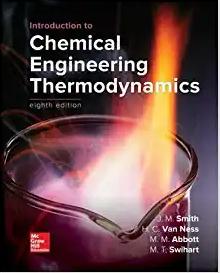Answered step by step
Verified Expert Solution
Question
1 Approved Answer
A 1 . A large cylindrical vessel is used as a batch reactor and is perfectly mixed. The liquid inside is heated to keep the
A A large cylindrical vessel is used as a batch reactor and is perfectly mixed. The liquid inside is heated to keep the reactants at an elevated temperature. Heat is lost through the portion of the vessel wall that is in contact with its liquid contents, corresponding to an area of The overall heattransfer coefficient, is
The temperature of the ambient surroundings is the mass of liquid in the tank is and its specific heat capacity is There is no flow into or out of the tank. The contribution of any chemical reactions to the heat balance is very small, and should be neglected.
a Determine the rate of heating required to keep the contents of the tank at a steadystate temperature of
marks
b At a given moment at the rate of heat input to the tank undergoes a stepincrease by due to an increased flow of steam The ambient temperature has not changed, nor has the overall heattransfer coefficient.
i Formulate a dynamic model of the system, take deviation variables, and take Laplace transforms to obtain an expression with the following general form:
Evaluate the constants and
marks
ii Find a timedomain expression for the dynamic response of the output variable after the stepchange in heat input and thus, determine how much time has elapsed when the temperature of the tank contents reaches
marks
Note, you may use the identity, exp

Step by Step Solution
There are 3 Steps involved in it
Step: 1

Get Instant Access to Expert-Tailored Solutions
See step-by-step solutions with expert insights and AI powered tools for academic success
Step: 2

Step: 3

Ace Your Homework with AI
Get the answers you need in no time with our AI-driven, step-by-step assistance
Get Started


